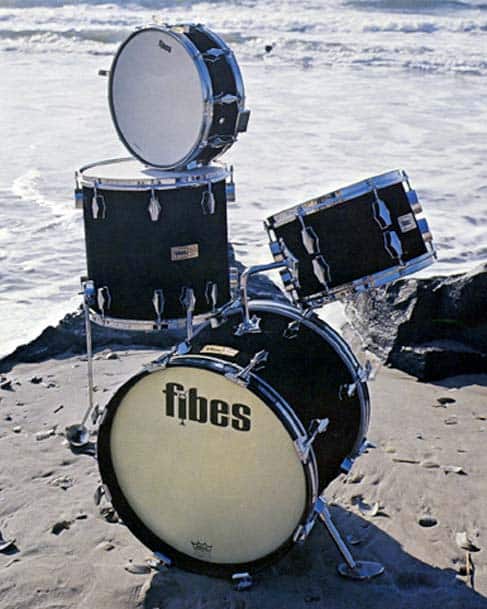

The lights were powered by a single mains power unit. Based on a 3-band (pattern A) shell, the Tivoli kits had tiny lights mounted along the two horizontal seams. Power bass drums were fitted with two pairs of spurs (one front, one rear – natch).ġ978 also saw the launch of the Tivoli kits (see 1980 catalogue in the catalogues section). Ludwig launched their “power” drums in 1978 and a few extra deep Vistalites were produced. The hardware was improved with 12 inch toms now being equipped with large lugs and bass drums being fitted with the thicker half inch spurs.

Smoke (a sort of see-through grey) was added. With sales of fewer than 50 kits, green was dropped from the Vistalite colour options. The badge and tone control were now mounted together, opposite the tom mount – creating bi-directional toms (though the position of the seam on Vistalites still implied left and right-side drums). In terms of colours, solid white and black were added to the line. The positioning of the seam became consistent across all double headed drums – by the lugs behind the tom mount. The tone control was now fitted with a nylon sleeve and a 3-hole re-enforcing plate was also added to the assembly. Along with the Rainbow shells, the seam ‘V’ was now positioned on the inside of the shell and the acrylic resin was not worked to a smooth finish. Most significantly was the introduction of the Rainbow Vistalite shells in six patterns (see below). This year saw the first major changes to the Vistalite line. Production methods were changed within a couple of months of launch and the problems disappeared. This was the result of the acrylic sheets being removed from the oven before reaching the required temperature. The very earliest kits suffered from a mild ‘crazing’ of the shells. Therefore with both concert and double-headed toms, there was a clear definition of left and right-mounting.Īs with other Ludwig kits, concert toms and the 12 inch double-headed toms were fitted with the small classic lugs. Concert toms had the seam positioned under the clip mount, though the badges were still positioned to face the audience. On double headed toms the seams were normally positioned at the rear of the toms, the badge positioned to face the audience and the tone control (mounted with a single screw and nylon washer) towards the drummer. The effect of the resin is to make the colour appear to fade at the seam on the coloured shells. The early shells were formed with a v-shaped gap on the outside of the shell and filled with clear acrylic resin. The launch drums were available in clear, blue, red, amber, yellow and green. The following timeline should help you date your Vistalites: John Bonham began playing Vistalites in 1973 and the name Vistalite became known throughout the drumming world.Changes over the years. One of the earliest adverts for the line quoted the name “Stratosphere Drums” though this tag soon disappeared (should it ever have been made public?).

The drums were produced at the main Ludwig factory in Chicago though the shells were actually produced by Cadillac Motors plastics division. The Ludwig Drum Company lanuched the Vistalite line in 1972, too late to make it into the 1973 Ludwig Percussion catalogue. At launch, six colours were available: The seams were glued with acrylic resin and the shells were then finished and fitted in a similar manner to wooden ones. Legend has it that Ginger Baker (Cream) made an acrylic kit himself by heating sheets of plastic over his stove (see adverts section).The drums themselves are made from acrylic sheets that were heated and shaped for form cylinders. (Ron Bushy from the heavy metal group Iron Butterfly was the first Zickos endorsee in 1969.) In the early 1970’s the Fibes drum company took plastic percussion to a wider audience with both Bill Cobham (Mahavishinu Orchestra) and Nick Mason (Pink Floyd) playing clear acrylic kits from Fibes. Acrylic drums were first produced by Bill Zickos from Kansas in 1959 with commercial production beginning a decade later. Although now synonymous with acrylic drums, Ludwig Vistalites were not the first and, some would argue, not the best acrylic drums produced. Vistalite was the name of the acrylic drum line produced by Ludwig.


 0 kommentar(er)
0 kommentar(er)
